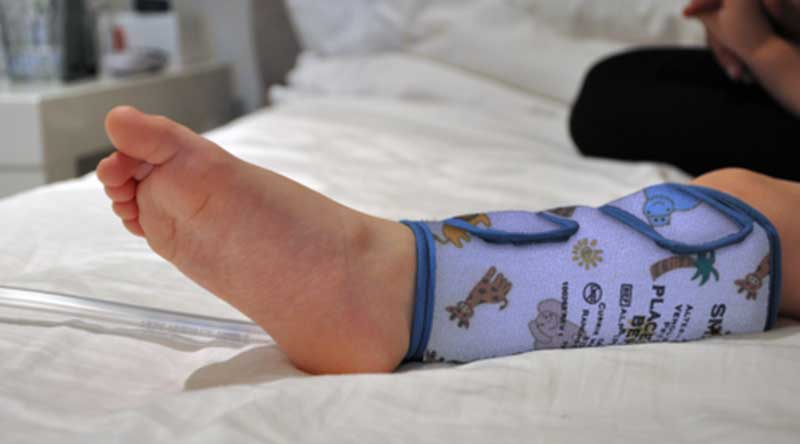How Smart Fabrics Weave Wellness Into Medical Product Designs

Table of Contents
- Introduction
- Monitoring Vital Signs
- Delivering Targeted Therapy
- Enhancing Physical Rehabilitation
- The Manufacturing Challenge
- Vinyl Technology Can Help You, Too
The boundaries between traditional fabric and cutting-edge technology are blurring rapidly within the healthcare sector. It’s no longer just about bandages and bedsheets, or simple hazmat suits. Today, we’re witnessing the rise of “smart fabrics” – textiles infused with sensors, electronics, and advanced materials that unlock a whole new dimension of medical care.
Imagine a hospital gown that can continuously track a patient’s vital signs, alerting staff to any potential concerns in real time. Or a bandage that senses the wound environment and actively delivers medication or wound-healing therapies. These are not distant sci-fi concepts. Smart fabrics are poised to transform patient monitoring, drug delivery, physical rehabilitation, and much more.
This revolution extends beyond just the technology itself. Medical devices that incorporate smart fabrics can enhance patient comfort, safety, and treatment outcomes. They can facilitate remote care, reduce the need for invasive procedures, and empower individuals to take a more active role in their own health management.
The integration of technology into textiles is fundamentally changing how we think about medical products. Smart fabrics are where wellness meets innovation, offering a powerful tapestry of possibilities for improved healthcare for everyone.
Monitoring Vital Signs
Let’s get into one of the most exciting aspects of smart fabrics: their ability to monitor vital signs. Tiny sensors can be seamlessly woven into the fabric of garments, bandages, or even bedding. These sensors detect and track crucial health indicators like heart rate, respiration, temperature, and blood oxygen levels.
This real-time data stream has transformative implications for patient care. Doctors and nurses can remotely monitor patients, allowing for earlier intervention and potentially preventing serious health events. For individuals with chronic conditions, smart fabrics can provide continuous monitoring, sending alerts if their vital signs deviate from safe ranges.
Beyond basic monitoring, smart fabrics can be designed to measure specific biomarkers. This paves the way for early detection of diseases, tailored treatment plans, and personalized medicine. Imagine a compression sleeve that detects subtle changes in blood flow, aiding in the diagnosis and management of lymphedema. Or a smart sock that monitors foot temperature and alerts diabetic patients to potential ulcer development.
The potential of smart fabric vital sign monitoring extends far beyond traditional hospital settings. Athletes can use them to optimize performance and detect signs of overexertion. Smart baby onesies could monitor a newborn’s breathing and temperature, offering peace of mind to new parents. These advancements promise to make healthcare more proactive, convenient, and accessible for everyone.
Delivering Targeted Therapy
While vital sign monitoring is impressive, smart fabrics can take healthcare further by delivering targeted therapy directly where it’s needed. Tiny drug reservoirs, micro-pumps, and even heating elements can be integrated into the fabric structure. This allows for the controlled and localized release of medication, heat, or even compression.
Consider a smart bandage with a built-in drug delivery system for wound care. It could release antibiotics, pain medication, or growth factors to accelerate healing, all without the need for frequent dressing changes.
Similarly, smart fabrics could help manage chronic pain. A compression garment could offer targeted, adjustable pressure relief, or a sleeve might deliver heat therapy to achy joints. These smart solutions provide a more convenient, drug-free way to manage pain and enhance patients’ quality of life.
This technology isn’t limited to external applications. Implantable smart fabrics are an area of active research. They could be used to deliver drugs directly to tumors, manage inflammation after surgery, or even provide long-term pain relief. The possibilities for targeted, personalized treatment are vast – smart fabrics could shift healthcare from a one-size-fits-all model towards a future of precise, individualized interventions.
Enhancing Physical Rehabilitation
Beyond monitoring and treatment, smart fabrics hold immense promise for physical rehabilitation. By incorporating movement sensors and haptic feedback elements, these fabrics can guide patients through exercises, track progress, and provide real-time adjustments to ensure proper form.
For stroke survivors, smart fabric gloves could sense finger movements and offer targeted assistance, helping to regain dexterity and hand function. Similarly, a smart shirt might track posture and provide gentle reminders, encouraging good alignment during rehabilitation for spinal injuries.
The real-time feedback and continuous monitoring offered by smart fabrics can be revolutionary for rehabilitation. Patients get a customized exercise plan tailored to their needs, helping them make consistent progress. Therapists gain valuable data on patient performance, allowing them to refine treatment strategies and maximize outcomes.
These technologies also hold value in athletic training. Smart garments can analyze an athlete’s movement patterns, identifying areas for improvement and pinpointing potential injury risks. This data-driven approach helps athletes fine-tune their performance and stay healthy throughout their season. The combination of movement tracking and therapeutic elements in smart fabrics unlocks a new frontier for faster recovery, optimized training, and enhanced physical well-being.
The Manufacturing Challenge
While smart fabrics’ capabilities present thrilling possibilities, bringing these innovative medical products to life requires specialized expertise. The design and manufacture of smart medical textiles demand a unique blend of skills and knowledge.
Precision medical RF welding techniques are often needed to integrate sensors, electronics, and other functional elements into the fabric. Expertise in working with a wide range of materials, from traditional textiles to conductive threads and biocompatible coatings, is crucial. Understanding human physiology, therapy protocols, and the regulations around medical devices is also essential.
Developing a smart fabric medical product is not merely a matter of sewing electronics into a garment. It involves careful material selection, understanding of biocompatibility, complex fabrication considerations, and compliance with strict quality control standards.
The manufacturing challenges highlight the importance of partnering with an experienced company capable of navigating these complexities. Successful smart medical textiles demand close collaboration between product designers, engineers, material scientists, and manufacturers with a proven track record of creating reliable, safe, and effective products.
Vinyl Technology Can Help You, Too
At Vinyl Technology, we understand the specialized processes and stringent standards involved in bringing smart fabric medical products from concept to reality. Our decades of expertise in RF welding, industrial sewing, and custom manufacturing for critical applications make us a trusted partner for organizations looking to harness the potential of smart fabrics.
Vinyl Technology also specializes in creating other products such as pneumatic pillows, self-inflating field mattresses, and anti-g suits.
If you’re developing a smart medical device, product, or textile solution, we’re here to help. Our team can guide you through material selection, design optimization, precision manufacturing, and quality assurance processes. By collaborating with Vinyl Technology, you gain access to extensive knowledge, advanced capabilities, and a relentless focus on delivering safe and reliable products that genuinely enhance patient outcomes.
Let’s discuss how we can help bring your smart fabric innovations to life. Contact us today to explore the possibilities.

